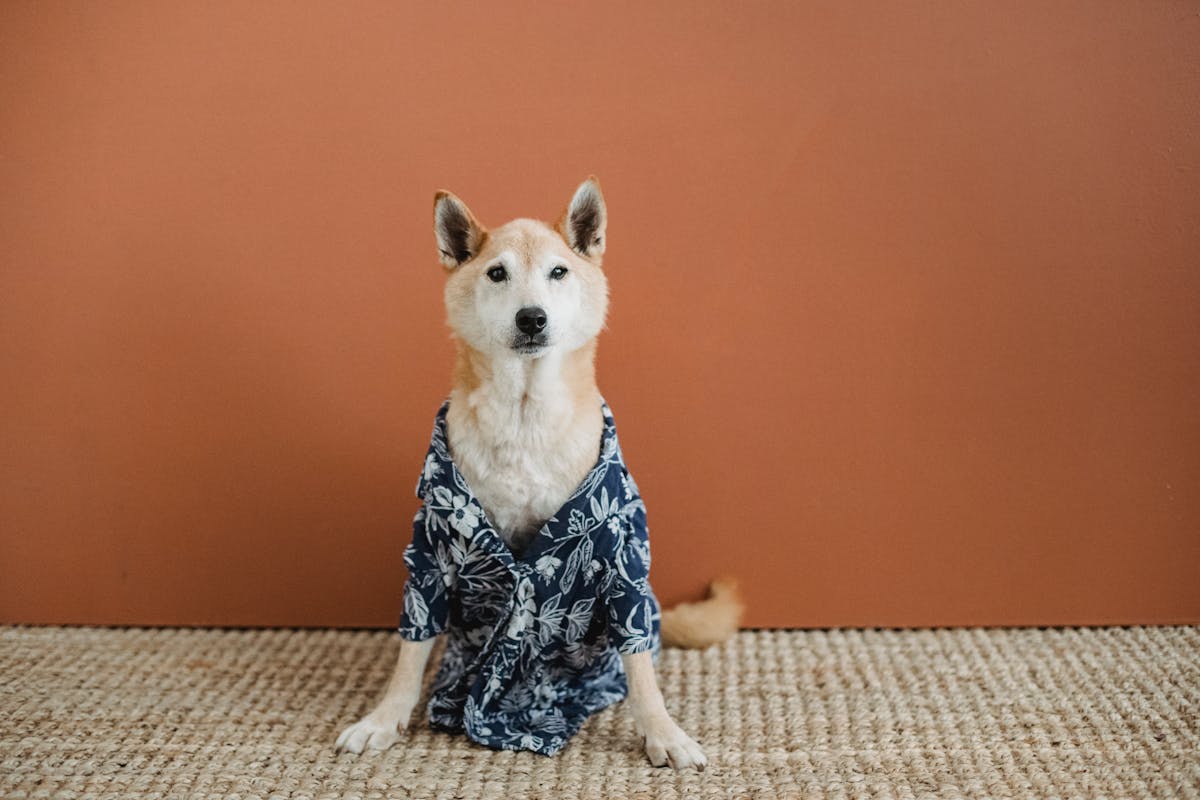Lacking attention and hunger are some of the reasons why your dog may sit and stare at you. Dogs have captivated humans for centuries with their expressive eyes and the unspoken stories they seem to convey. One of the most common yet mysterious behaviors in dogs is their tendency to sit and stare.
Whether it feels like they’re reading your mind, waiting for something, or simply observing, this action often leaves dog owners wondering: why do they do this?
In this guide, we’ll unpack the science, emotions, and communication behind your dog’s staring habits. By the end, you’ll have a deeper understanding of this fascinating behavior, making your bond with your furry friend stronger than ever.
Table of Contents
ToggleThe Intriguing Behavior: Why Dogs Stare at Humans
Dogs don’t just stare for no reason. Their gazes are intentional and often serve a purpose. Understanding why they fixate on us begins with exploring their instincts, emotional intelligence, and the dynamics of human-canine interaction.
Evolutionary Roots: How Staring Originated
Dogs evolved from wolves, pack animals that relied on non-verbal communication for survival. A sustained stare was essential in coordinating hunts, asserting dominance, and building social cohesion within the group. Domesticated dogs inherited these traits but adapted them to their human-centric lives.
Thousands of years of living alongside humans transformed dogs into adept communicators. They learned to use their gaze not only to understand us but also to elicit specific responses. Staring is now an evolved form of seeking attention and deepening bonds.
The Role of Oxytocin: The Love Hormone
Research has shown that when a dog stares into their owner’s eyes, both parties experience a release of oxytocin, the same hormone that strengthens bonds between mothers and infants. This mutual interaction fosters trust, love, and a sense of security.
The oxytocin-driven cycle encourages both you and your dog to seek eye contact more often, making this behavior a cornerstone of your relationship.
Dogs as Master Observers of Human Behavior
Dogs are highly attuned to human emotions. When they stare, they’re often analyzing your expressions, tone of voice, and body language to gauge your mood.
A dog’s stare might also be a way of asking, “What’s next?” They rely on us for cues, especially in unfamiliar situations, to determine their next move.
Common Reasons Dogs Sit and Stare
1. They Want Attention
A dog’s stare can be a polite request for your time and affection. Whether they want to cuddle, play, or simply be acknowledged, staring is their way of saying, “Notice me!”
2. Anticipating Treats or Rewards
If your dog has associated your actions—like reaching into a bag—with rewards, they may stare to encourage you to follow through.
3. Expressing Basic Needs
Hunger, thirst, or needing to go outside can all prompt a stare. Dogs use this silent method to communicate their immediate needs effectively.
4. Curiosity About You
Dogs are naturally inquisitive. If you’re doing something unusual or making sudden movements, their stare might simply be a reflection of their interest.
Decoding the Difference: Harmless Staring vs. Potential Problems
Most staring is harmless and indicates affection, communication, or curiosity. It’s often accompanied by relaxed body language and soft eyes.
If the gaze feels hard, unblinking, or is paired with signs of stress—such as growling, pacing, or whining—it could indicate discomfort or aggression. In such cases, consider consulting a professional trainer or veterinarian.
Persistent staring, especially in older dogs, could be a sign of cognitive decline, vision problems, or neurological issues. Watch for other symptoms like confusion, disorientation, or changes in routine.
The Impact of Training on Staring Behavior
Dogs are quick learners. If staring leads to a treat or petting, they’ll repeat the behavior. Positive reinforcement creates a cycle where staring becomes their preferred method of communication.
While staring isn’t harmful, training your dog to use other signals—like pawing or barking softly—can provide additional clarity in communication.
The Role of Breed and Individual Personality
Dog breeds like Border Collies or Australian Shepherds are known for their intense stares, a trait linked to their herding instincts.
Breeds such as Bulldogs or Cavalier King Charles Spaniels may rely less on prolonged gazes and more on physical contact to express themselves.
Regardless of breed, each dog’s personality shapes their staring habits. Some dogs are naturally more observant and reliant on visual cues.
Misunderstandings About a Dog’s Stare
1. Fear or Aggression
Not every stare is friendly. In some situations, a dog may use a hard gaze to signal discomfort or as a precursor to defensive behavior. Recognizing accompanying body language is key to interpretation.
2. It’s Not Always About Food
While begging is a common cause of staring, dogs often gaze at their owners simply for connection or reassurance, not because they expect something tangible.
Strengthening the Bond Through Eye Contact
Responding positively to your dog’s stare reinforces their confidence in you. A warm smile or affectionate response can make your dog feel understood and valued.
Activities like obedience training, agility exercises, or simply lounging together create opportunities for mutual understanding and enhance your dog’s comfort with eye contact.
When to Seek Professional Guidance
If your dog’s staring is excessive or linked to anxiety, consulting a canine behaviorist can help address the root cause. Staring accompanied by unusual behavior, lethargy, or confusion should be evaluated by a veterinarian to rule out health concerns.
Conclusion
Your dog’s habit of sitting and staring isn’t just a quirky behavior—it’s a window into their world of communication, affection, and curiosity.
By understanding the reasons behind their gaze, you can respond more effectively and nurture an even stronger bond.
Whether they’re asking for a snack, trying to decode your emotions, or simply basking in the joy of your presence, your dog’s stare is a testament to the profound connection you share.
Embrace these moments, for in your dog’s eyes lies a reflection of their loyalty, love, and unwavering devotion.






